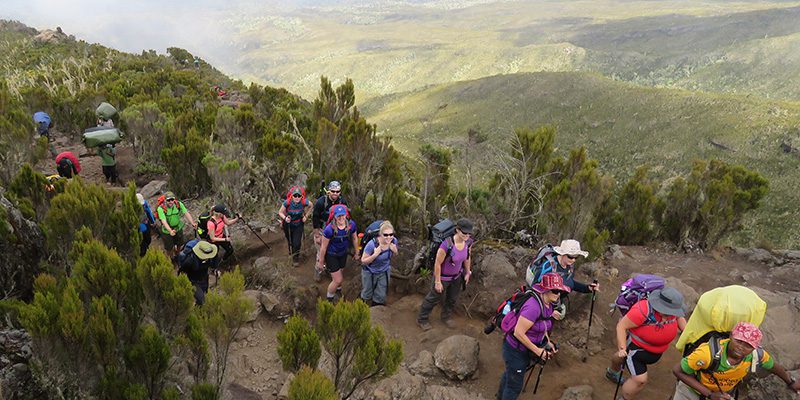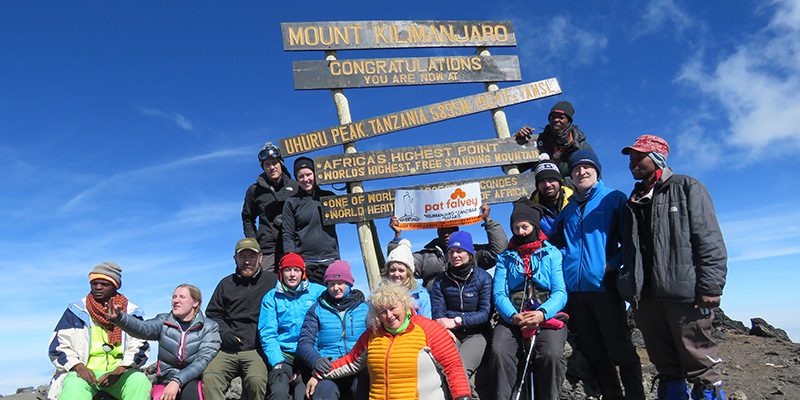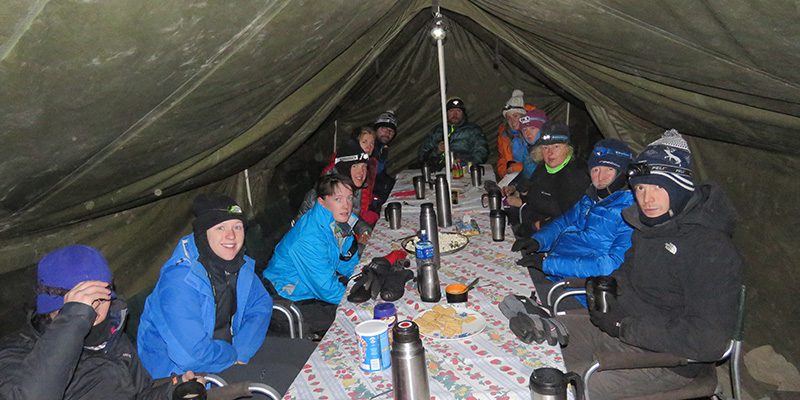Being Prepared for the Climb
Health and Safety Tips for Climbing Kilimanjaro
When climbing Mount Kilimanjaro, there are some health risks to take note of before embarking on your journey to the summit. Being aware of the physical challenges that you may face throughout the adventure will help you be better prepared for your climb. You are going to experience harsh weather that will be on either extreme of the spectrum. In situations like these, being prepared with full gear and the right tools and apparel will help you focus more on the beauty of the adventure and less on the hardships.
In all cases, especially thinking of an undertaking like this hike, prevention is better than cure. Here are five rules that will act as Kilimanjaro safety tips as you get through your journey:
Acclimatize slowly: Let your body take time to adjust to the external environment around it.
Stay Hydrated: Consuming water in regular intervals gives the body the necessary fluids to adjust to the lower oxygen levels and keeps your senses elevated.
Take enough breaks: Breaks allow your body to adjust to the altitude.
Dress for the occasion: Your body will be projected to extreme weather. Appropriate clothing will prevent any burns.
Follow your guide: Your guide is extremely experienced with all the information needed for staying safe on Kilimanjaro
As you go up, one of the most common things trekkers encounter is Acute Mountain Sickness. Simply put, climbing the mountain too fast or without enough preparation will cause you to experience altitude sickness. Rapidly climbing the mountain and reaching areas with significantly lower levels of oxygen may cause dizziness, nausea, headaches and fatigue.
This is no race, but when they said, “Slow and steady wins the race” they meant it. By slowing down, you’re not only enhancing your experience on the mountains but you’re also protecting yourself from all health risks. The most underrated health advice for the Kilimanjaro climb is to take enough rest and breaks as you climb, spend enough time on particular altitude levels and give your body time to adjust to lower levels of oxygen.
Some other common health issues include cold burns, hypothermia, sunburns and blisters. To protect yourself from the hard rays of the sun and the unforgiving winds at high altitudes, dressing up in protective layers would do the trick. From full sleeves and thermal clothing to caps and sunglasses to shield the eyes from the strong rays.
Another common occurrence is injuries during the climb. The terrain is quite tumultuous, so equipping yourself with walking sticks or trekking poles for your long climb can do wonders for your joints and muscles.
Our guides are very well prepared in cases of emergencies. No matter how prepared you are, there are sometimes unavoidable curveballs that come your way. For those situations, our guides receive ample training and are constantly in touch with the ground force to help out any of the members of the group during the climb. As long as you stay close to the guide, and follow all instructions, your climb is bound to be a memorable one!
Climb Kilimanjaro the roof of Africa with PAT FALVEY & Team
Ready to embark on the adventure of a lifetime and discover Kilimanjaro’s captivating secrets firsthand? Join one of our expertly guided expeditions and experience the thrill, beauty, and challenge of summiting Africa’s tallest peak.
Are you planning a trip ?
Get help from our experts



